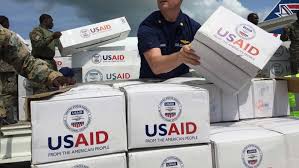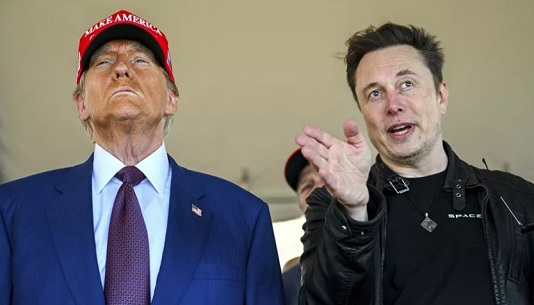The Trump administration has made the U.S. Agency for International Development, a decades-old organization responsible for carrying out foreign aid programs around the world, a top target in its campaign to remake the federal government.
Musk took to X on Sunday to brand USAID a “criminal organization” and called for its death. As of Sunday afternoon, the agency’s website is inaccessible.
What does USAID do?
USAID provides humanitarian and development assistance to other countries, primarily by dishing out funds to nongovernmental organizations, foreign governments and international organizations, or other U.S. agencies, according to the Congressional Research Service (CRS).
In fiscal year 2023, USAID managed over $40 billion of appropriations — less than 1 percent of the federal budget, according to federal records — provided to about 130 countries. The top recipients of USAID funding included Ukraine, Ethiopia, Jordan, the Democratic Republic of Congo and Somalia.

More than 10,000 people work for USAID, about two-thirds of whom serve overseas, according to the CRS. USAID’s projects included providing assistance to famine-stricken regions in Sudan, providing textbooks for displaced schoolchildren in Ukraine and training health workers in Rwanda, according to an archived version of its website.
How long has it existed?
USAID was created in 1961 under President John F. Kennedy through the Foreign Assistance Act, which brought several existing programmes under the new agency.
The U.S. government’s approach toward international development assistance emerged in the 1940s with the Marshall Plan, which provided aid to assist European countries in rebuilding and stabilizing the region after World War II, according to an archived version of USAID’s website. In subsequent decades, USAID shifted to providing additional assistance to support health and education development and promote democratic governments and free markets.
Health programs have been the largest USAID sector by funding since the early 1990s, bolstered in 2004 by billions of dollars from the U.S. State Department’s efforts to combat HIV/AIDS, according to the CRS. Health continued to dominate USAID projects through the covid-19 pandemic, until it was surpassed by humanitarian assistance as the largest sector in 2022 and governance assistance in 2023, as a result of U.S. support to Ukraine.
Why is it under attack?
To its proponents, USAID is an indispensable arm of U.S. foreign policy that demonstrates American good will, stabilizes disaster areas and opens new markets for international trade.
“It’s a national security tool kit that has been developed over 60 years,” Jeremy Konyndyk, president of Refugees International, an aid group that does not receive U.S. funding, told The Post. “And if it’s destroyed, it cannot be easily rebuilt.”
The Trump administration has made reducing government spending and eliminating perceived bloat within the federal government a top goal, with foreign aid squarely in its sights. Musk had vowed to slash federal spending by $2 trillion.
Trump’s allies — most prominently Musk, in a storm of X posts on Sunday — have also assailed USAID’s work as corrupt, wasteful and left-wing. The State Department last week vowed to review all foreign assistance programs and ensure spending aligns with “the America First agenda.”
What has happened to the agency so far?
Trump issued an executive order freezing U.S. foreign development assistance for 90 days upon assuming office. The move caused chaos within the ranks of the State Department and USAID, which were instructed to pause long-standing projects including the President’s Emergency Plan for AIDS Relief (PEPFAR), The Post reported.
The Trump administration placed dozens of USAID officials on administrative leave Monday and accused the agency of attempting to circumvent the funding freeze.
Sen. Charles E. Schumer (D-New York) wrote on X on Friday that any move to dissolve USAID would be illegal. In a joint letter Friday, Sens. Jeanne Shaheen (D-New Hampshire) and Brian Schatz (D-Hawaii) and Reps. Gregory W. Meeks (D-New York) and Lois Frankel (D-Florida) wrote that the freeze jeopardized energy assistance for Ukraine and helped American adversaries like Russia and China.
Secretary of State Marco Rubio announced an exemption for “life-saving” programs like PEPFAR, but aid officials said other projects remain in limbo and are at risk of shuttering if the funding freeze continues, The Post reported Saturday.
That day, USAID’s website was taken down.
* The Washington Post*




